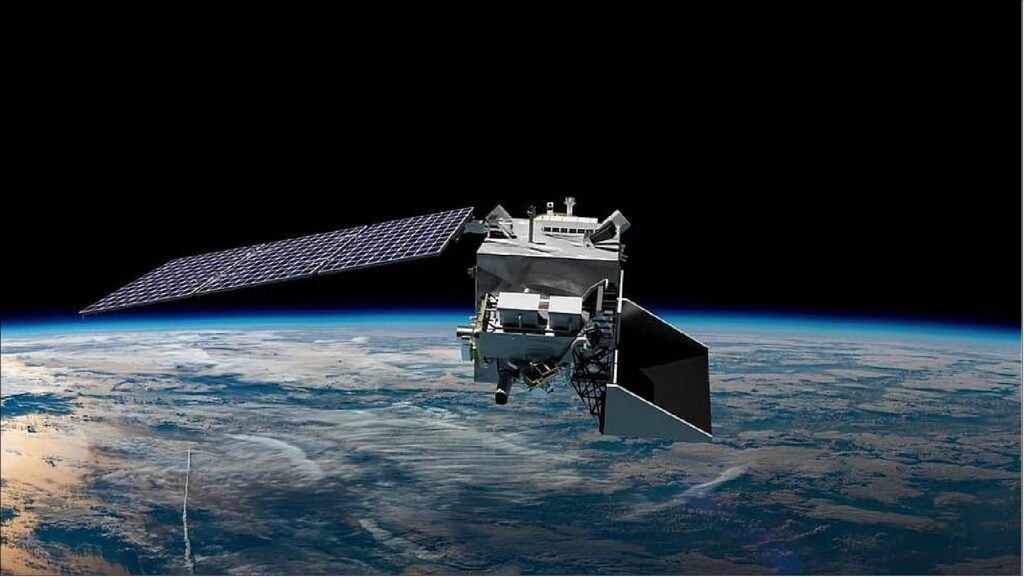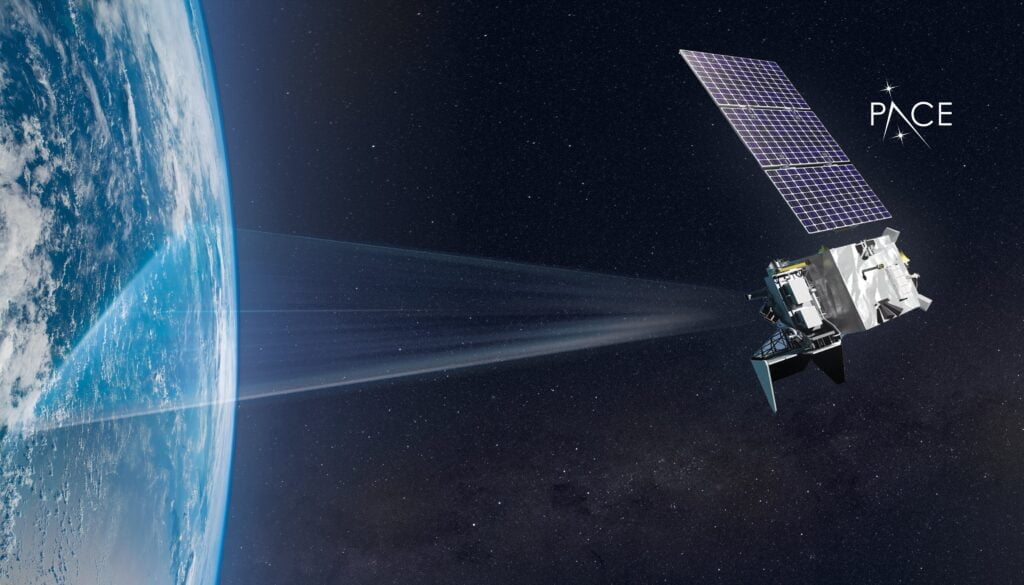NASA’s relentless pursuit of understanding our planet’s intricacies reached new heights as the Pace satellite embarked on its groundbreaking mission. Launched by SpaceX on a $948 million project, this satellite promises to revolutionize our comprehension of Earth’s oceans and atmosphere. The Falcon rocket propelled Pace into space in a rare polar orbit, poised to provide unprecedented insights into our home planet.

A New Era of Observation
The Pace satellite, an acronym for Plankton, Aerosol, Cloud, Ocean Ecosystem, is designed to be the most advanced Earth-observing mission to date. Unlike its predecessors, Pace can see a staggering 200 colours, a significant leap from the seven or eight colours seen by current Earth-observing satellites. This technological advancement will enable scientists to identify various algae types in the sea and discern particles in the air with unparalleled precision.
Enhanced Climate Forecasting
One of Pace’s primary objectives is to contribute to the improvement of hurricane and severe weather forecasts. Positioned 420 miles above the Earth’s surface, it will meticulously scan the globe daily, capturing never-before-seen details of atmospheric phenomena. With this wealth of data, scientists anticipate refining their ability to predict and understand the occurrence of harmful algae blooms, providing valuable insights for ecological management.

Revealing Earth’s Interactions
While NASA already has a fleet of Earth-observing satellites, Pace brings a new dimension. By focusing on the interactions between atmospheric aerosols, such as pollutants and volcanic ash, and sea life, including algae and plankton, the satellite aims to unravel complex relationships that shape our planet. Project scientist Jeremy Werdell emphasizes that Pace will fill critical gaps in our understanding, offering a comprehensive view of Earth’s interconnected systems.
Mission Against the Odds
The Pace project’s journey to space has been marked by resilience, and overcoming challenges, including attempts by the Trump administration to cancel it. Despite these hurdles, the determination of the scientific community prevailed, culminating in the successful launch of Pace. Werdell reflects on the project’s perseverance, acknowledging the “long, strange trip” it has been, underscoring the significance of its ultimate triumph.

Global Collaborations in Earth Observation
NASA’s commitment to advancing Earth observation extends beyond Pace. The agency is collaborating with India on another cutting-edge satellite named Nisar, set to launch this year. Nisar will utilize radar technology to measure the impact of rising temperatures on glaciers and other melting icy surfaces, further expanding our understanding of climate change’s far-reaching consequences.
Conclusion: NASA’s Pioneering Climate Pace Satellite
As Pace embarks on its three-year mission, it heralds a new era in Earth observation. Armed with state-of-the-art technology, this satellite promises to unlock mysteries hidden in the oceans and atmosphere, providing scientists with invaluable data to enhance our understanding of climate, weather, and ecological processes. In the face of adversity, the successful launch of Pace stands as a testament to human perseverance and the unwavering pursuit of knowledge about our home planet.
In the vast expanse of space, the Pace satellite stands as a sentinel, poised to decode Earth’s secrets. As it embarks on its ambitious mission, the global scientific community eagerly anticipates the transformative impact of Pace’s revelations, confident that this pioneering project will deepen our connection with the dynamic forces shaping our planet.
Source Report link
For more latest trendy news like this visit our Latest News page. Please visit our Contact Us page in the footer menu to contact us. You can check out our Best Deals page for various needy offers and deals of the day. To know more about us visit the About Us page in the footer menu. You can also read our Disclaimer, Affiliation Disclosure and FAQs page in the footer menu. You can also find the Webstory Page in the footer menu to see our latest published web stories.

